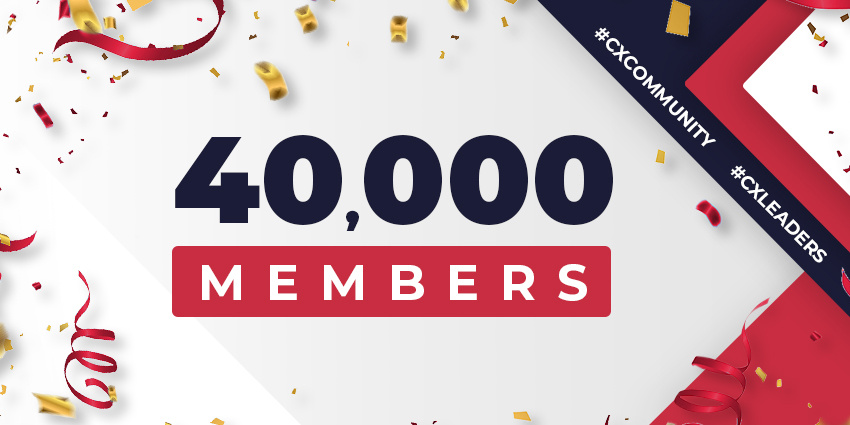While companies around the world are becoming increasingly aware of the importance of excellent customer experiences, evolving expectations are making it harder for business leaders to engage, retain, and convert their audiences. Today’s consumers expect companies to understand their needs, deliver personalized interactions, and provide value across all channels.
To stay ahead of the competition in this space, companies need more than just the right omnichannel contact center tools. They need to be able to understand the sentiment and intent of their target audience, leveraging “Voice of the Customer” or “VOC” insights.
Voice of the Customer technology provides business leaders with valuable tools they can use to analyze their customers, discover purchasing trends, and unlock opportunities for growth. Here are some of the hottest trends driving the VOC technology industry forward in 2023.
The Rising Impact of AI for Conversational Analytics
For years, companies relied heavily on the use of surveys and feedback requests to analyze the voice of the customer. While these tools can still deliver phenomenal value, many organizations are noticing that surveys and testimonials only offer an insight into a fragment of the customer experience. With many consumers failing to answer surveys, businesses generally end up with a limited view of the issues their clients face, and their purchasing goals.
Fortunately, AI could be the solution. Conversational AI technology, capable of capturing information about intent and customer sentiment from voice and text can enhance the CX data available to any company. According to Gartner, by 2025, 60% of businesses using VOC programs will be supplementing traditional surveys with AI technology.
Increasingly, vendors are beginning to implement these tools into their CRM and contact center solutions, providing easy access to AI solutions capable of rapidly uncovering trends and statistics from customer conversations. Utilizing NLP and NLU solutions, these tools can offer everything from historical reports on interactions, to real-time metrics.
Using VOC Tech for Hyper-Personalization
For businesses looking to enhance customer experiences and satisfaction levels, VOC technology doesn’t just provide access to useful data. The most innovative solutions on the market can also integrate with a range of other contact center tools, allowing businesses to create more streamlined, personalized experiences for customers.
As “hyper-personalization” emerges as a critical trend for customer service in 2023, businesses will be utilizing more of the data they collect from voice of the customer insights to align their services to specific customer needs. The right solutions can provide businesses with the information they need to determine which channels they should use to interact with different customer segments. Additionally, they can be integrated into AI solutions like generative AI bots, to provide more personalized recommendations and assistance to customers throughout the buyer journey.
Intelligent VOC technology aligned with self-service bot creation tools could even provide businesses with the opportunity to leverage proactive customer service strategies. The right bots can use insights and tracking technologies to offer guidance to customers depending on where they are in their purchasing journey, and their current intent or sentiment.
Increasing Demand for Automation
Automation has become a common trend in the CX landscape in recent years, driven by staffing shortages, increased demand, and a more complex customer journey. In the VOC landscape, automation can be a valuable tool for a range of reasons. First, companies can use no-code low-code workflow builders to define where information about the voice of the customer is collected.
Teams can implement bots specifically designed to ask for feedback from customers at the end of each conversation, reducing the strain on human workers. These tools can also automatically upload customer information to databases, and update essential consumer profiles, minimizing the end-of-call work that can hamper team productivity.
Perhaps most importantly, automated solutions within the VOC landscape can help to ensure businesses remain compliant with privacy and security standards. They can ensure information collected from each customer is safe to use for business decision-making purposes. Some solutions can also automatically inform companies of any risks connected with utilizing certain data.
Aligned Tools for Customer Journey Orchestration
Perhaps the biggest benefit of Voice of the Customer technology for business leaders, is that it allows organizations to better understand the customer journey, and the requirements of their clients. Around 76% of customers today say they’re frustrated when they don’t receive a personalized, relevant experience across every channels.
As companies from the CX landscape continue to build VOC technologies such as conversational analytics tools and automated survey systems into their platforms, they’re also beginning to experiment with new ways of empowering teams. For instance, CCaaS vendors are beginning to release journey orchestration tools, which align with VOC reports and insights from other parts of the business, to provide a more comprehensive view of the customer journey map.
Crucially, the most advanced tools for VOC innovations ensure businesses can collect and unify insights from a variety of channels. The right systems will automatically translate information from digital, video, and voice channels, into unified insights crucial for orchestrating the customer journey. These solutions integrate naturally with a host of tools, and may even offer access to SDKs and APIs for advanced developer customization.
Real-Time Dashboards for Agents
Much of the VOC experience in the past has involved the use of tools to analyze surveys and feedback from prior conversations with customers. While these tools still offer a useful insight into the evolving benefits of customer service strategies today, companies are increasingly looking for ways to be more proactive in the way they optimize CX initiatives.
Real-time analytical tools, enhanced by AI, can provide agents in the modern customer service environment with more useful advice and guidance during each interaction. The right tools can provide immediate views into concepts like customer sentiment and intent, to boost a company’s chances of earning higher satisfaction scores.
Real-time dashboards enhanced with VOC technology, reporting tools, and AI solutions can ensure businesses have access to solutions that potentially reduce churn rate, and optimize employee performance in the moment. There are even AI solutions that can offer real-time coaching and next-best action guidance, based on VOC insights.







